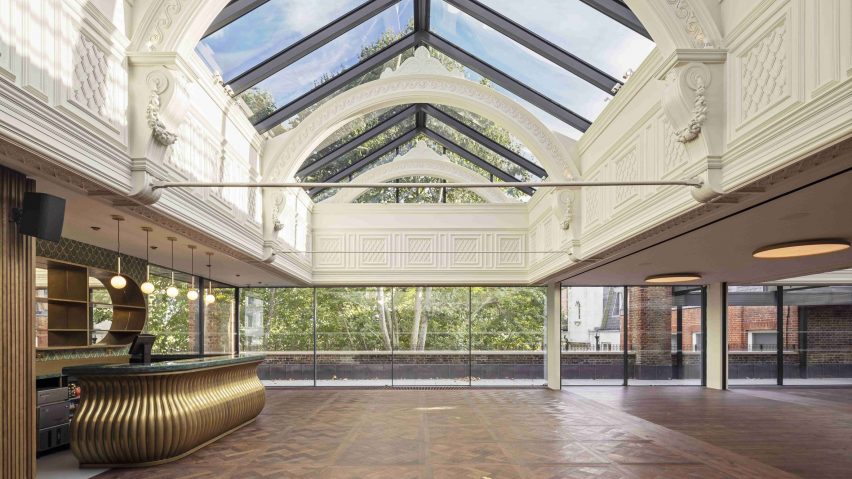
Benedetti Architects uncovers forgotten Victorian skylights inside BAFTA headquarters
The Grade II-listed BAFTA headquarters in London's Picadilly have received an overhaul from local studio Benedetti Architects, who raised the roof to squeeze in a new top floor while unifying its disparate interiors.
Constructed in 1883, the building originally served as the Royal Institute of Painting in Watercolours and was adapted ad hoc over the subsequent years before the British Academy of Film and Television Arts (BAFTA) took over in 1976.
Benedetti Architects was brought on board in 2016 after winning a competition to completely rework the space.

Scrambling around in the loft as part of his research, project lead Renato Benedetti discovered two vast Victorian roof lanterns, complete with ornate plasterwork, that had been boarded up more than 40 years prior when BAFTA created a cinema in the space below.
The practice's pitch centred on lifting up the roof and turning the loft into a members' area, with the two huge skylights being removed, restored and reinstated as the crowning glory of the new top storey.
"BAFTA loved the idea although they didn't think it was possible," Benedetti told Dezeen. "But that's exactly what we did and it has been the driver for the whole project."

Moulds were made before the intricate plaster was carefully removed, allowing specialist restorers to match new sections seamlessly with the original design.
Other than the roof lights, almost all the building's original features such as flooring and staircases were lost as sections of the building were rented out by different tenants over its haphazard history.
Under the bank of seating in the cinema though, the team found just enough of the original oak flooring to fit inside the new top-floor boardroom.
"The long strips were quite damaged, so we cut them down to shorter lengths and laid them in a geometric pattern," said Benedetti.
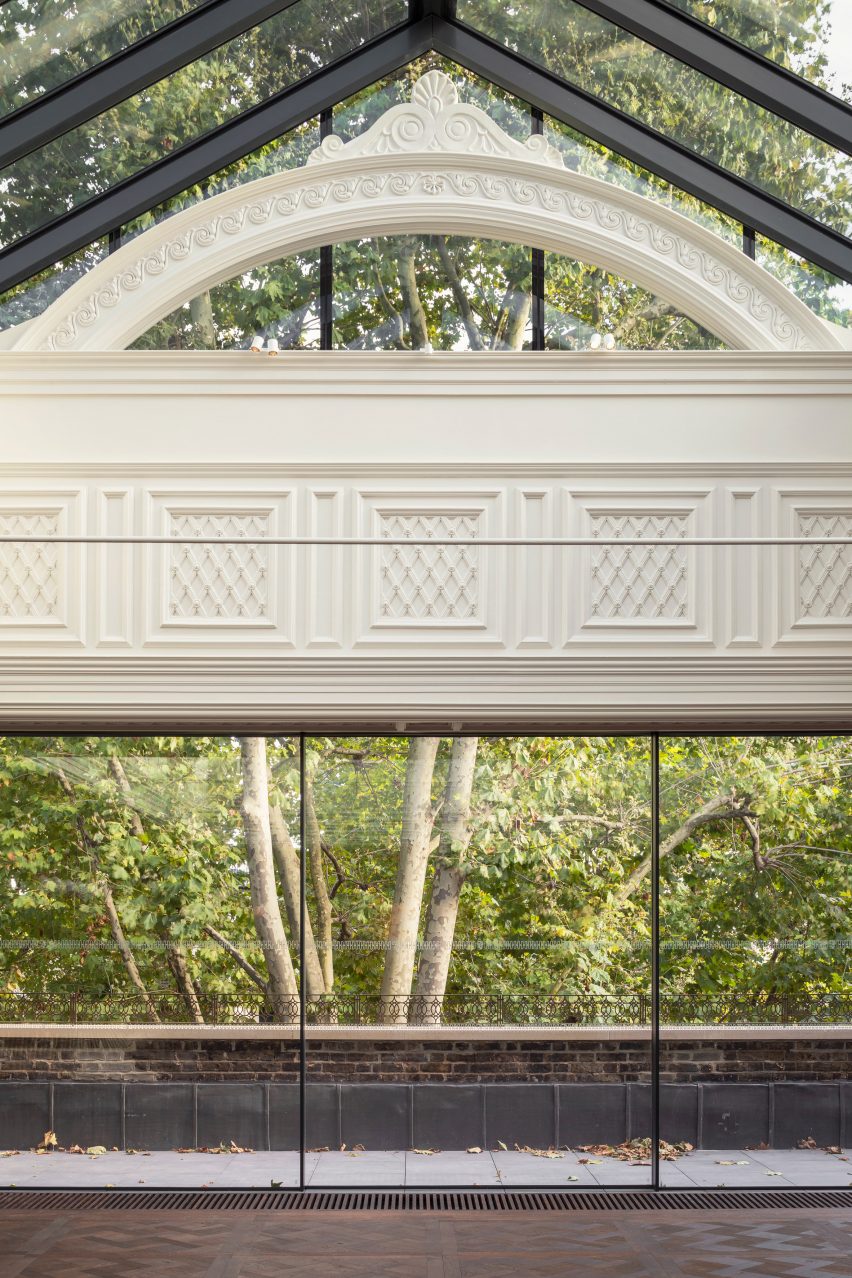
Similarly, the remaining bits of marble from different schemes around the BAFTA headquarters were collaged together to create a statement countertop for the boardroom.
The room is centred by an oval timber table, which the studio designed to feel "more friendly and less hierarchical" than a typical boardroom, complete with comfortable "wrap-around" chairs that can also be stacked.
"We used a character grade of oak with big knots and imperfections, which I love," said Benedetti. "It makes the timber more interesting."
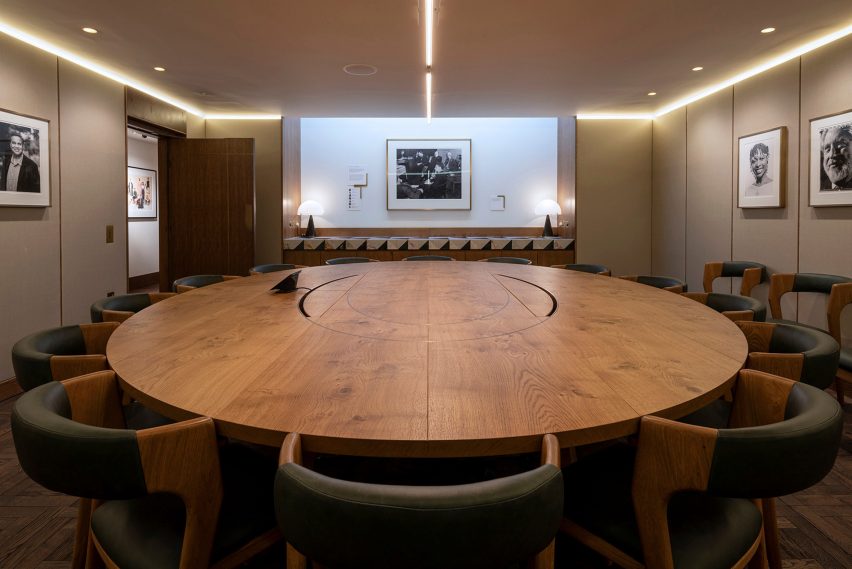
Elsewhere across the building, responsibly sourced European oak was laid in a variety of patterns to cover floors and walls.
For the main circulation areas such as the entrance hall and the stairs, the studio used an ivory-coloured terrazzo with brass trims peeking out between the large-format tiles.
Brass accents are repeated throughout the building on handrails, trims, lighting and on the reveals around the lifts. "Here, the sheet brass has a slight sheen, a little lustre but not too blingy," said Benedetti.
The terrazzo, too, is flecked with gold-coloured specks that increase in quantity as the user ascends up through the building and peak on the members' floor at the top.
"The top floor feels like the culmination, the crescendo of the space," said Benedetti.
This same idea is repeated across the walls, with the lower floors wrapped in stained-oak slats punctuated by black acoustic panels while on the members' floor, there's a more refined profile to the oak slats and the panels are replaced by a brass mesh.
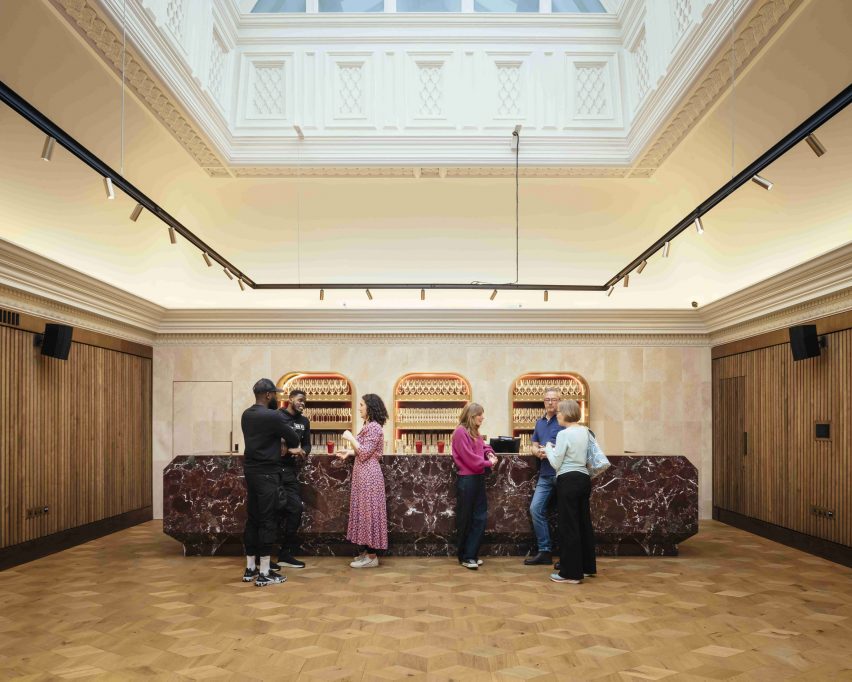
Travertine is the final key element of the headquarters' material palette, used in huge slabs and as fluted tiles as well as forming one of the building's bars.
"It has a great texture and it has been in use since Roman times, so it's quite timeless," the architect explained.
The building's trio of roof lanterns, including the two that were newly uncovered, now sit over the David Attenborough rooms – a members' area that looks out across the tree canopy of St James' churchyard.
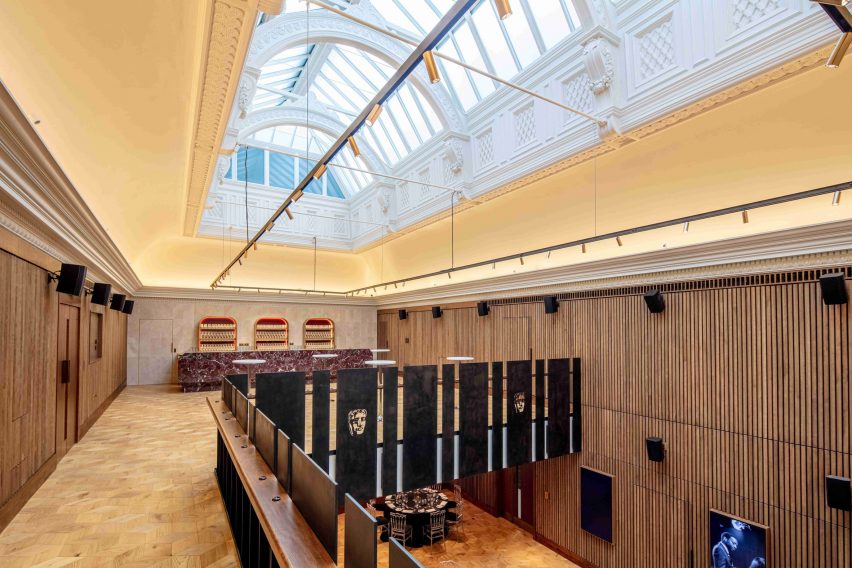
The furniture here was chosen by the architect in collaboration with Soho Home – the interiors arm of members' club Soho House.
To reduce heat gain and keep out harmful UV rays, the roof lights are integrated with solar shading windows by Dutch company Eyrise.
"It's an interesting new material, from the inside it appears to be clear, but from outside it looks almost black," Benedetti explained.
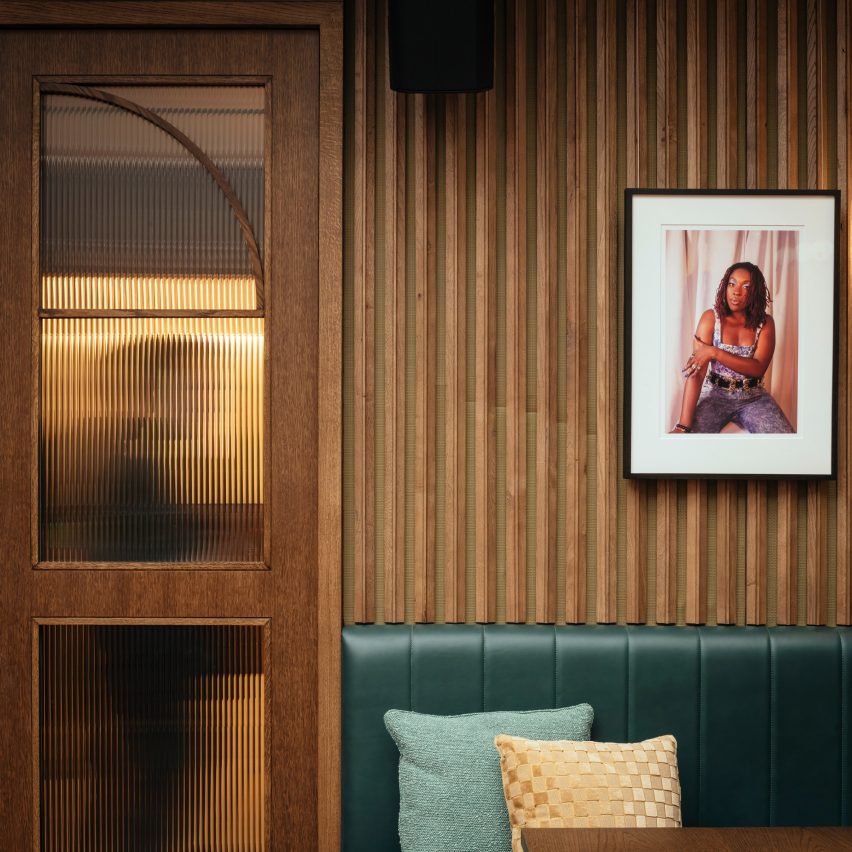
The members' floor also houses a new intimate 41-seat cinema, its rich red colour palette informed the choice of red Italian marble for the adjacent bar.
The larger original cinema was completely updated in partnership with Dolby, integrating a high-tech audio-visual system.
Meanwhile, the Ray Dolby Room is designed as a versatile event space, where the conventionally wood-panelled walls and moulded ceiling can be quickly transformed into a space for 360-degree wall-mapping projections.
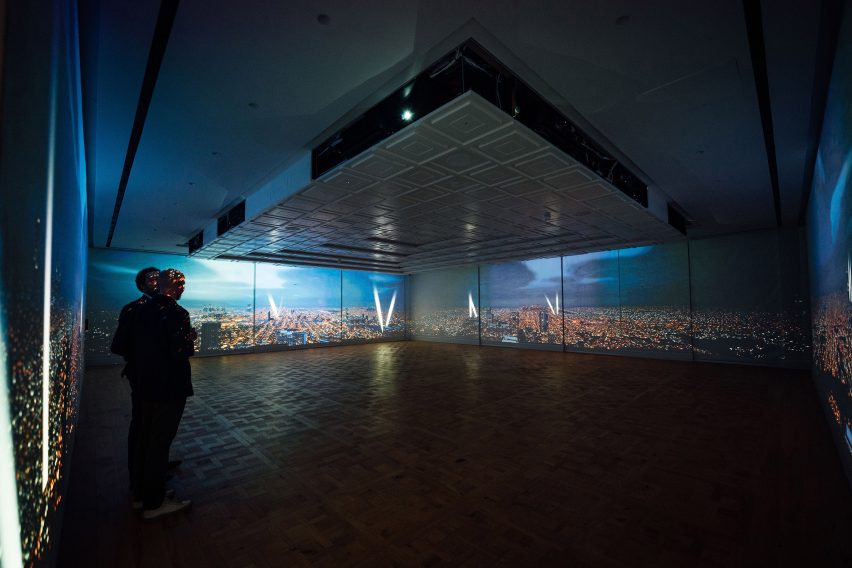
Benedetti was recently named as the architect on another high-profile renovation in the British capital – the £20-million revamp of the Grade II-listed RIBA headquarters.
Previously, the architect was one half of McDowell+Benedetti, which was known for innovative bridge designs including Hull's Scale Lane Bridge and Castleford Bridge in West Yorkshire before the duo disbanded in 2016.
The photography is by Luca Piffaretti unless otherwise stated.
Jorda Anderson, Thomas Alexander, Rory Mulvey, James Newton, and Jim Stephenson.